Nature's Accounts
Records of Nature in the Archives & Collections of the University of Dundee
An exhibition held in the Lamb Gallery, July - September 1997
Introduction
This exhibition sets out to show the diversity and quantity of material available within the University to scholars and non-professionals.It ranges from skeletons and maps to extinct species of bird and records of raspberry farming in Angus.
The University of Dundee holds in its Archives and Museum Collections numerous records of the natural world. Much of it is a legacy of the Victorian obsession with the exploration, classification and recording of the world around them.
The University has a share of such collections. The major contributors are D'Arcy Thompson, Robert & Margaret Corstorphine and David Waterston.
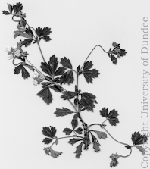
Robert & Margaret Corstorphine - Botanical Collectors
The University was gifted in 1944 a large collection of Angus plants by Margaret Corstorphine. Amounting to over 3500 sheets of pressed plants it was the result of a husband and wife team who collected voraciously in the Angus primarily in the Glen Clova region from 1884-1944.
What we have is a beautifully preserved collection that could be used in study in various ways, such as comparing the distribution changes of certain plants or detecting changes in atmospheric pollutants in plants.
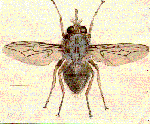
David Waterson - Artist & Entomologist
David Waterson, artist, painter, etcher and mezzotint engraver, was born in Brechin in 1870. He studied at the Edinburgh School of Art, was elected A.R.E. in 1901 and R.E. in 1910. He was a keen entomologist and was responsible for discovering a species of wood wasp, hitherto thought to exist only in fossil form, in the ancient forest of Montreathmont near Brechin. After his death his wife gifted his drawings of the Hymenoptera of Angus to Queen's College, Dundee. They were taken to the Department of Zoology by Professor Peacock, with whose support the merit of his scientific work was internationally acknowledged. After Professor Peacock's death they were returned to the University. They were deposited in the University Archives in 1981. The collection includes newspaper articles, a scrapbook, water-colour studies of the Hymenoptera, stinging insects, of Angus and miscellanea.
Related Pages:
Travails of a Scientist - Extracting DNA from Herbarium Specimens
Naturalists at Dundee
Below are some details of the most important naturalists from the early days of University College Dundee:
- D'Arcy Wentworth Thompson (1860-1948)
- Patrick Geddes (1854-1932)
- William Thomas Calman (1871-1952)
- Doris Livingston MacKinnon (1883-1956)
- Robert Smith (1874-1900)
- Alexander David Peacock (1886-1976)
See also our page on Scientists at Dundee
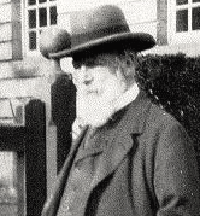
D'Arcy Wentworth Thompson (1860-1948)
D'Arcy Thompson became Professor of Natural History at University College, Dundee in 1885. He felt it was imperative that he had a zoology museum for teaching his subject and set about acquiring specimens. His study is said to have been jam packed with specimens in every corner and filling every shelf. By 1917 when he left to take up a chair at St Andrews University there was a great museum including one of the best Arctic Zoological Collections. Much of the collection was dispersed in 1956, but what remains forms today's D'Arcy Thompson Zoology Museum. It is these specimens that D'Arcy uised in writing his masterpiece On Growth & Form, published in his last year at Dundee.
See the Zoology Museum webpages for more information.
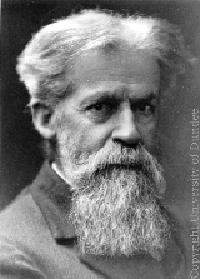
Patrick Geddes (1854-1932)
Patrick Geddes is a man who has left echoes of his influence in many areas of modern study - biology, town planning, sociology and ecology.
He was given a part-time post in Dundee in the Chair of Botany in 1888 teaching only in the summer term. He stayed in at Dundee for 30 years.
He started the post with the ambition to make the best of being part of a small unit: "Here I can plan things exactly as I want them. I may have the smallest botany department, but I intend to make the most effective garden for teaching in the British Isles".
Geddes is said to have been an unconventional though inspiring Teacher. His philosophy reverberates down the century with a message just as current today. He appealed to planners and architects to survey physically in all possible aspects (geographical historical, cultural, economic social) the areas that they were asked to develop or restore.
Find out more about Geddes on the Artist & the Thinker website.
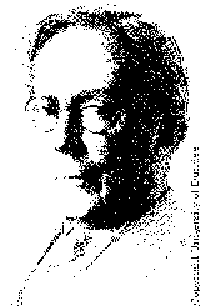
William Thomas Calman (1871-1952)
Born in Dundee, Calman's life revolved round the study of the natural world. He became a member of the Dundee Working Mens' Field Club and later joined the Dundee Naturalists Society where he met D'Arcy Thompson.
He was asked to be Thompson's lab boy in 1892. From here he was able to attend lectures without paying fees. He graduated 3 years later with distinction. Meanwhile he looked after the museum and wrote several scientific papers. After graduation he was appointed assistant lecturer and demonstrator under D'arcy. He stayed University College, Dundee for 8 years - specialising in Crustacea. He looked up to D'Arcy and no conversation was held without a reference to the great man. When D'arcy left for St Andrews he applied for the vacant Chair, but was turned down, despite references from 21 Fellows of the Royal Society (FRS). Later he was the first University College, Dundee graduate to be elected FRS. He moved to the Natural History Museum where he had a long and distinguished career working on Crustacea. He retired in 1936 as Keeper of Zoology. He returned to Scotland to live in Tayport and was brought in to teach at Queens College, Dundee and St Andrews during World War II.
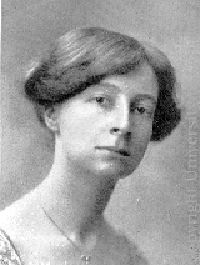
Doris Livingston MacKinnon (1883-1956)
Doris MacKinnon gained a reputation in University College, Dundee as a brilliant lecturer and Protozoologist and by 1912 she had gained her DSc.
She was ran the Zoology Department when D'arcy left in 1917 till 1919 when she went to Kings College London. She published extensively on parasites in insects. It was from her war work that she branched out to study amoebic dysentery. In 1927 Doris MacKinnon was awarded a Professorship and eventually and retired in 1949.
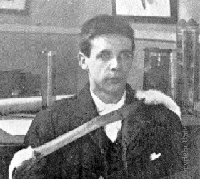
Robert Smith (1874-1900)
Born in Dundee, Robert Smith is now acclaimed as a father of Ecology. The University recently hosted a Robert Smith Memorial Conference for the discussion of modern ecology, its present practice, and future.
He went to the Harris Academy, which at the time was located by the University Biology Department. His intimate knowledge of local flora and fauna must have been inspired and helped by the presence of the two great teachers D'Arcy and Geddes. He was an inspiring founder of the Working Mens' Field Club. Robert was only 27 years old when he died from appendicitis, but he accomplished much in his short life. Luckily his older brother had caught the enthusiasm of Robert and carried his work on to completion. The task of surveying the botany of the local area has never been repeated in such detail. Geddes, himself an accomplished teacher, acknowledged Smith as a natural born teacher. He was employed as a demonstrator under Geddes and took over the teaching of botany in the two terms he was not present.
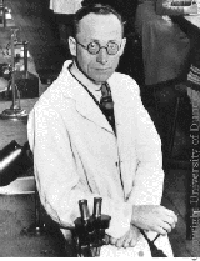
Alexander David Peacock (1886-1976)
Born in Newcastle, Peacock left school at 15. Whilst working for his grocer father he attended night school, where he qualified to enter the education department of Durham University. Here he worked for a teaching certificate, specialising in Zoology.
He was appointed to the Chair of Natural History at University of Dundee in 1926. In 1956, the year he left the University, the Biology department was at its lowest point in its history. Though it soon recovered, regrettably a squeeze on space saw D'Arcy Thompson's Collection split under the guidance of Peacock.
Peacock is remembered for his radio broadcasts in the 1930s that helped to popularise biology. He became a byword for practical biology and led expeditions to all parts of Scotland and set up the University field station at Glen Clova.
In World War II he took a large interest in fostering the welfare and education of the Polish Troops and civilians living in Scotland.
He also started the Saturday Evening lectures that still continue today.